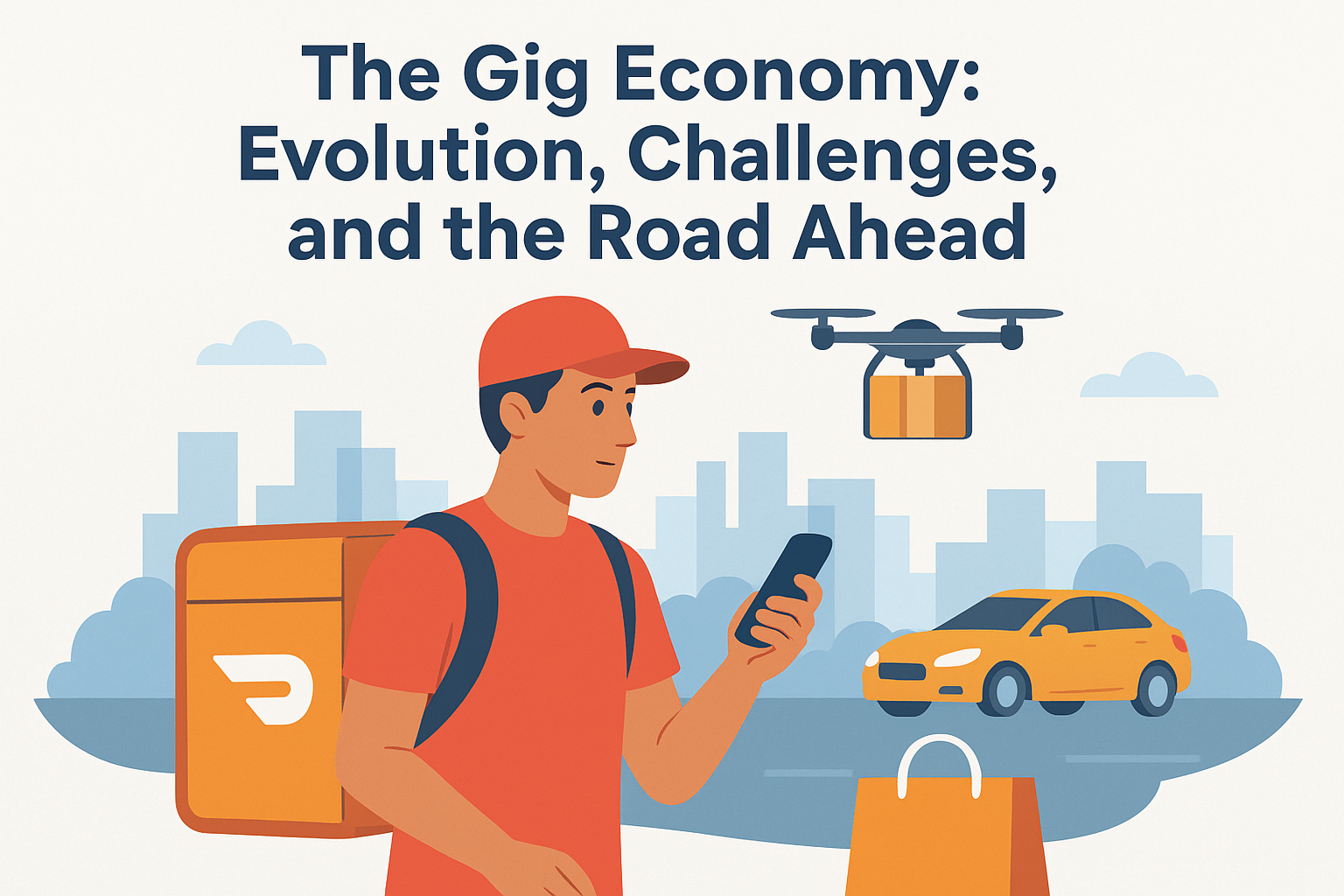
by Jason Tieri | Aug 16, 2025 | Blog
The Gig Economy: Evolution, Challenges, and the Road Ahead
The gig economy continues to evolve at a breathtaking pace, with companies like DoorDash reaching astronomical valuations while simultaneously expanding their global footprint. Recently valued at $100 billion, DoorDash has transformed from a simple food delivery service to a multifaceted global corporation, marking its first annual profit in 2024 after years of aggressive expansion. This milestone represents the maturation of the gig economy, where early-stage growth and market capture often take precedence over immediate profitability.
DoorDash’s strategy illustrates the evolving business model of gig economy platforms, which increasingly diversify beyond their core services. The company’s acquisition of Deliveroo for $4 billion gives them significant presence in more than 40 countries, while their purchase of Seven Rooms, a hospitality software company, demonstrates their ambition to control multiple aspects of the restaurant industry ecosystem. Perhaps most notably, DoorDash’s advertising technology business has crossed the $1 billion threshold in annualized revenue, indicating that data and advertising may ultimately prove more profitable than the delivery service itself.
While gig economy companies expand, concerning trends continue to emerge regarding how workers navigate an increasingly competitive landscape. Recent videos have shown children delivering packages for Amazon Flex and DoorDash drivers, raising serious safety concerns. These children, some appearing as young as 10 years old, can be seen approaching strangers’ homes unaccompanied – exposing them to potential dangers from aggressive dogs to unsafe encounters. This troubling practice highlights the pressure many gig workers feel to maximize efficiency, sometimes at the expense of safety and proper protocol.
The relationship between gig platforms and their merchant partners also deserves scrutiny. A shocking story emerged about a bakery in Cupertino that was overcharged by DoorDash for eight years, with the company collecting a 30% commission instead of the contracted 13%. This discrepancy, amounting to over $100,000, went undetected until a family member reviewed the financial records. While DoorDash eventually refunded the money after media involvement, the incident raises questions about how many other small businesses might be unknowingly overcharged, especially those without the resources for regular financial audits.
Technological innovation continues to reshape the gig landscape, with drone delivery representing the next frontier. DoorDash is now recruiting workers to transport food from restaurants to drone loading stations, offering $18 per hour for this new role. While this technology promises faster deliveries and reduced traffic congestion, practical challenges remain regarding weather limitations, operational logistics, and the somewhat counterintuitive process of having human couriers deliver food to drones rather than directly to customers. Nevertheless, consumer curiosity will likely drive initial adoption as people embrace the novelty of drone delivery.
The gig economy continues to present a complex mix of opportunity, innovation, exploitation, and adaptation. As companies like DoorDash expand globally and diversify their revenue streams, both workers and merchants must remain vigilant about their relationships with these platforms. The future of work increasingly depends on finding the right balance between technological efficiency and human wellbeing, ensuring that convenience for consumers doesn’t come at the expense of fair treatment for those who make the gig economy possible.
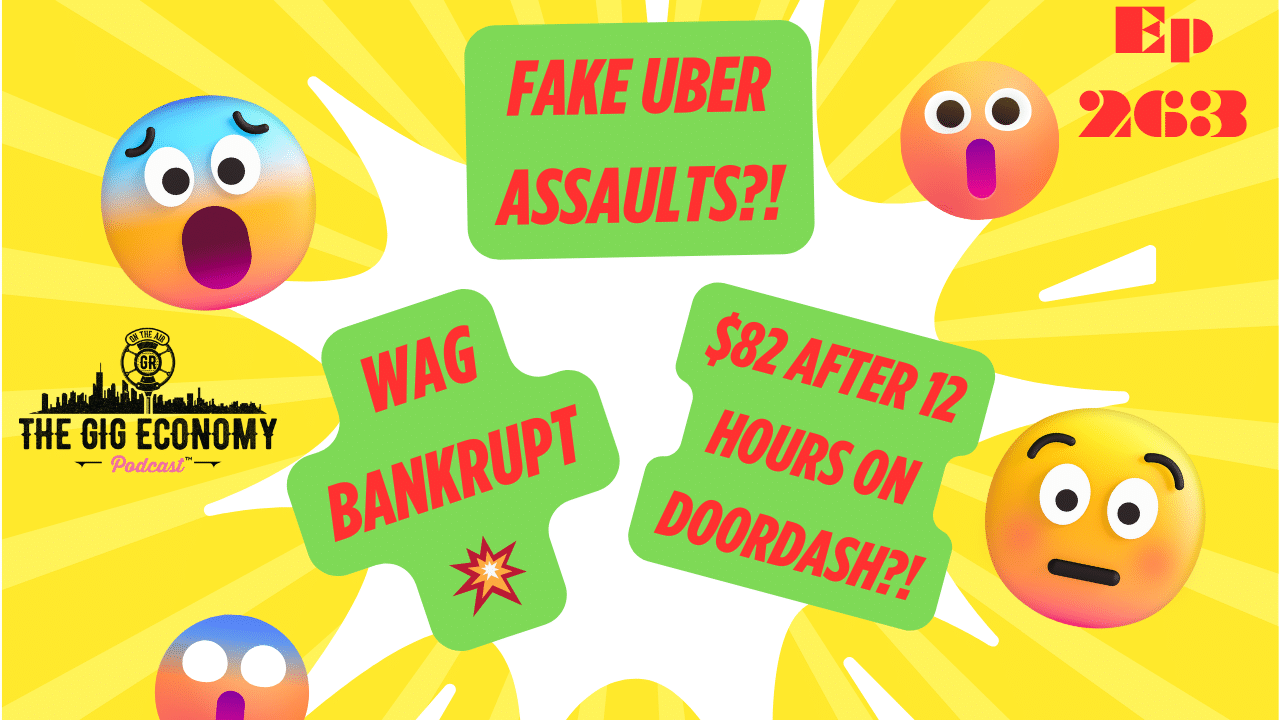
by Jason Tieri | Aug 11, 2025 | Blog
Everything Gig Economy Podcast Related: https://gigeconomyshow.com/
Download the Audio Podcast: https://thegigeconomypodcast.buzzsprout.com
Love the show? You now have the opportunity to support the show with some great rewards by becoming a Patron. Tier #2 we offer free merch, an Extra in-depth podcast per month, and an NSFW pre-show https://www.patreon.com/thegigeconpodcast
Newsletter link: https://bit.ly/gigeconomynewsletter
Octopus is a mobile entertainment tablet for your riders. Earn 100.00 per month for having the tablet in your car! No cost for the driver!
https://playoctopus.page.link/HD2FBKJzFqRR35YE9
Want to earn more and stay safe? Download Maxymo https://middletontech.com/gigeconomypodcast
Community Facebook Group: https://www.facebook.com/groups/451789943399295/
The Gig Economy Podcast Group Download Telegram 1st, then click on the link to join. https://t.me/joinchat/R42wUR2QGhCi2gBD
TikTok: https://www.tiktok.com/@gigeconomypodcast?
Subscribe on Youtube https://www.youtube.com/channel/UCK_bV7j7o1BzWtB4mt_4R8Q?view_as=subscriber
This podcast is produced by Hey Guys Media Group LLC http://www.heyguysmediagroup.com
Want to start your own podcast? Reach out to them today!

by Jason Tieri | Aug 4, 2025 | Blog
The landscape of the gig economy continues to evolve with significant developments across major platforms like Lyft, Spark, and Amazon Flex. These changes signal both progress and challenges for drivers navigating the complex world of independent contractor work.
Lyft has recently introduced a new “favorite driver” feature that allows passengers to mark specific drivers as favorites. While this has been a long-requested feature from the driver community, its implementation comes with a significant limitation – it only applies to scheduled rides. This restriction dramatically reduces its usefulness for many drivers, particularly those in markets where scheduled rides are uncommon. The feature allows customers to select preferred drivers for future scheduled trips, potentially building driver-customer loyalty, but falls short of the comprehensive solution many had hoped for. For college towns and areas where on-demand rides dominate, this feature may have minimal impact on driver earnings or customer experience.
Spark, Walmart’s delivery platform, is implementing a significant security upgrade with a new ID verification system. The system will require associates at self-checkouts to verify that the person picking up orders matches the approved Spark Shopper’s photo in the Walmart app. This move aims to combat account sharing, selling, and unauthorized shoppers—practices that have plagued the platform. The verification process takes a measured approach, instructing associates to report mismatches without confrontation, leaving enforcement to Spark’s trust and safety team. This development represents a crucial step toward maintaining platform integrity and ensuring only properly vetted individuals handle customer orders.
Amazon Flex is also making changes with how they structure Fresh delivery blocks, now combining tip-eligible grocery orders with non-tip-eligible Amazon.com packages. While this creates more delivery opportunities, it potentially dilutes the earning potential of dedicated Fresh blocks that previously consisted entirely of tip-eligible orders. The change highlights Amazon’s ongoing efforts to optimize delivery efficiency, sometimes at the expense of driver earnings potential.
The gig economy landscape continues to be shaped by issues of identity verification, fair compensation, and the balance between platform needs and worker interests. As these platforms mature, we’re seeing increased attention to security measures and innovative features, though implementation often fails to meet driver expectations fully. The tension between platform profitability and driver satisfaction remains a defining characteristic of the gig economy ecosystem, with each new feature or policy change revealing the complex interplay of these sometimes competing interests.
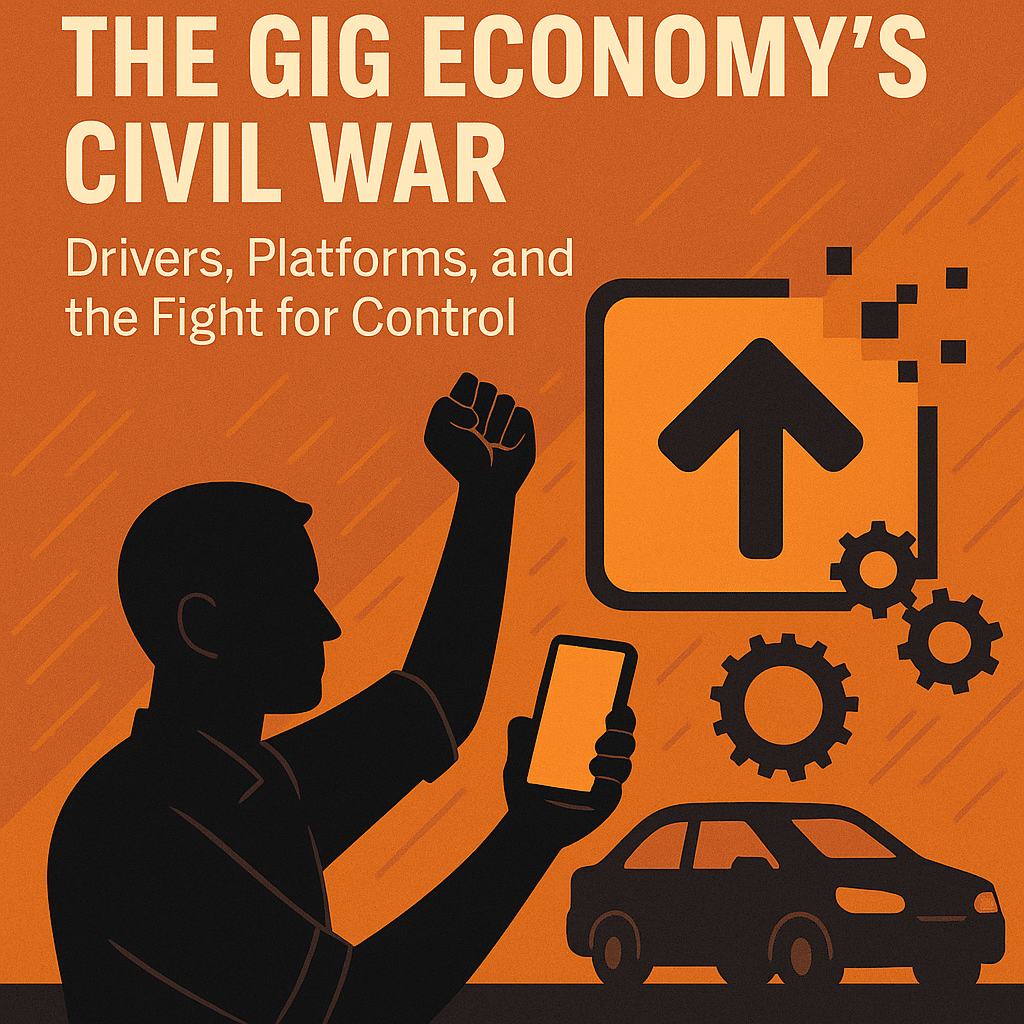
by Jason Tieri | Jul 27, 2025 | Blog
The battle between gig workers and the platforms they rely on continues to intensify, as evidenced in the latest developments discussed on The Gig Economy Podcast. Uber’s recent move to block third-party apps that help drivers cherry-pick profitable rides has sparked considerable controversy. Applications like Maximo, Maestro, and GigU have become essential tools for many drivers looking to maximize their earnings by setting parameters for ride acceptance based on distance, price, and other factors.
Uber and Lyft are warning that using these apps violates their terms of service, with the threat of potential deactivation looming over drivers who continue to use them. This represents a significant shift, especially considering Uber’s own history as a disruptive technology that once challenged established systems. The company even operated a project called “Gray Ball,” which reportedly created a fake version of their app to circumvent Apple’s App Store regulations. Now, these same companies are cracking down on technologies that help drivers navigate their systems more effectively.
The irony isn’t lost on drivers who remember when Uber portrayed itself as a champion for technological innovation and economic freedom. Many drivers argue that these third-party apps don’t violate terms of service because they simply automate the acceptance or rejection of rides—something drivers are permitted to do manually. The real issue seems to be that these apps make it easier for drivers to decline unprofitable trips, which potentially impacts the platforms’ ability to ensure all rides are covered, regardless of profitability for the driver.
This conflict highlights the ongoing tension in the gig economy between platform control and worker autonomy. While companies like Uber and Lyft need to ensure service reliability for customers, drivers are increasingly pushing back against conditions they find exploitative. These third-party apps represent a form of technological resistance, allowing drivers to assert some control over their working conditions in a system where they often feel powerless.
Beyond app conflicts, the podcast discussed several troubling incidents in the gig economy, including a shocking case where a delivery driver physically attacked a customer. Security camera footage captured the driver punching a 67-year-old woman who had questioned the whereabouts of her package. This extreme case illustrates the tensions that can arise in an industry where workers often feel underpaid, overworked, and under extreme pressure to meet delivery metrics.
Customer service challenges were also highlighted, with examples of clearly malfunctioning AI chatbots that completely misunderstand customer complaints. In one instance, a passenger reporting unsafe driving behavior received automated responses about pricing, demonstrating how technology intended to streamline operations often fails at addressing genuine concerns. As platforms increasingly rely on automation to handle customer service, these failures risk eroding customer trust and leaving both customers and workers without adequate support when problems arise.
The financial side of the gig economy was explored through discussion of Lyft stock, currently trading at around $14.73. Some financial analysts view this as a potential bargain investment, citing Lyft’s focus on US and Canada ride-sharing, new initiatives targeting specific demographics like female riders and senior citizens, and sixteen consecutive quarters of double-digit growth. However, drivers and industry insiders expressing opinions on the podcast were notably skeptical about Lyft’s long-term prospects, highlighting the disconnect between Wall Street analysis and ground-level industry experience.
As the gig economy continues to evolve, the podcast provides valuable insights into the complex dynamics between platforms, workers, customers, and the technologies that connect them. The ongoing struggles for control, fair compensation, and decent working conditions remain central to understanding the future direction of this increasingly important sector of the economy.
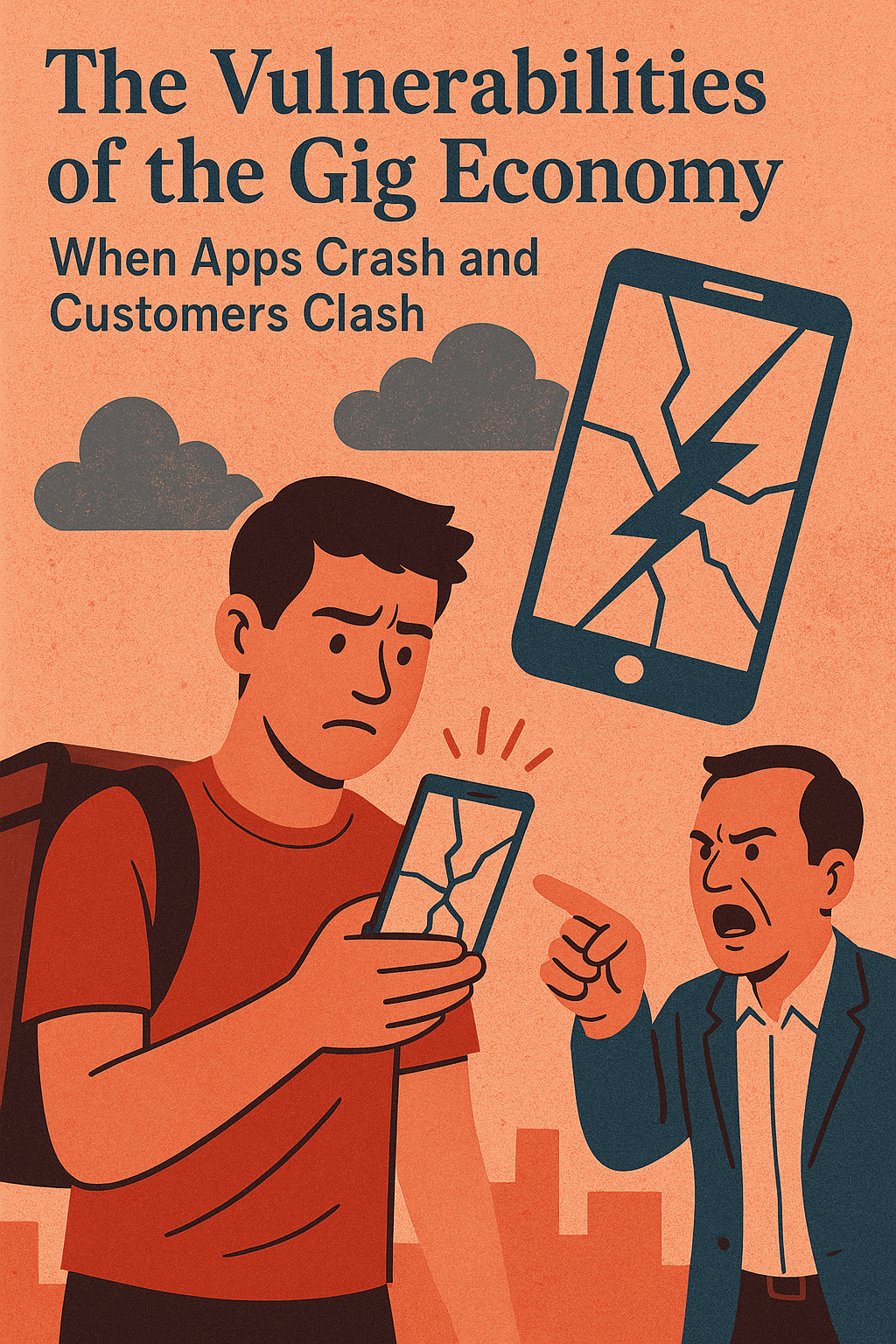
by Jason Tieri | Jul 19, 2025 | Blog
The Vulnerabilities of the Gig Economy: When Apps Crash and Customers Clash
Last week’s DoorDash outage highlighted a critical vulnerability that affects thousands of gig workers across the country. Beginning around 5am Eastern time, the platform experienced widespread technical difficulties that left both drivers and customers unable to access the service. By 8am, over 5,500 reports had been logged on Down Detector, with the service not fully restored until 10:30am. For many drivers who rely on DoorDash as their primary income source, those five hours represented a significant loss of potential earnings during the valuable morning rush.
This incident serves as a powerful reminder of one of the fundamental principles we consistently emphasize on the Gig Economy Podcast: diversification is essential for survival in the gig economy. Relying exclusively on a single platform creates a dangerous single point of failure. When that platform experiences technical difficulties, which is inevitable with any technology-based service, drivers who haven’t established alternative income streams find themselves completely unable to generate income. The most successful gig workers maintain active accounts on multiple platforms, allowing them to pivot quickly when one service experiences problems.
Customer service challenges continue to plague both drivers and customers across gig platforms. In a particularly frustrating example shared during our podcast, an Uber Eats customer attempted to increase their tip for a driver who had provided exceptional service, only to be repeatedly misunderstood by customer support representatives who appeared to be following scripts rather than addressing the actual request. Despite clearly explaining that they wanted to provide a larger tip to their delivery person, support representatives continued to misinterpret the situation as a complaint about late delivery, eventually offering credits to the customer instead of facilitating the additional tip for the driver.
Another significant challenge facing delivery drivers is navigating pickups at high-traffic event venues. Philadelphia sports fans have reported a troubling pattern where rideshare drivers accept ride requests from the sports complex designated pickup area, only to cancel as they approach. This creates a cycle where prices surge due to apparent demand, and customers end up paying more for their rides. Some drivers openly acknowledged waiting until prices surge before accepting rides, while others admit to canceling accepted rides when they notice prices increasing, hoping to receive the higher fare on their next request.
Safety concerns remain paramount for delivery drivers, particularly those handling food deliveries who may encounter territorial dogs. A sobering reminder of these dangers came from Florida, where a 65-year-old grandmother delivering for Uber Eats suffered severe injuries requiring a five-hour surgery after being attacked by two dogs while delivering to a neighbor’s house. Experienced drivers recommend always taking a moment to assess your surroundings before exiting your vehicle, carrying protective items like pepper spray, and maintaining awareness throughout each delivery.
The autonomous vehicle revolution continues its uneven progress, with Waymo vehicles demonstrating both promising advances and concerning limitations. A recent video showed a Waymo autonomous vehicle driving onto a freshly paved street in Atlanta, stopping midway, performing a three-point turn, and appearing confused about how to proceed. This incident joins previous reports of autonomous vehicles struggling with emergency vehicles, construction zones, and other unexpected road conditions that human drivers navigate instinctively.
For rideshare drivers looking to enhance the passenger experience while earning additional income, Octopus tablets offer an interesting opportunity. These free devices provide entertainment including trivia games and sports scores for passengers, with drivers earning monthly payments based on usage. The tablets require no financial investment from drivers and can generate approximately $50-75 monthly for full-time drivers.
As the gig economy continues to evolve, successful workers must remain adaptable, safety-conscious, and diversified across multiple platforms. The most resilient gig workers understand that technology will occasionally fail, customers will sometimes be unreasonable, and unexpected challenges will arise. By maintaining multiple income streams and prioritizing safety, gig workers can navigate these challenges while building sustainable independent careers.

by Jason Tieri | Jul 14, 2025 | Blog
The gig economy landscape continues to evolve rapidly with significant developments affecting drivers, customers, and platforms alike. On this week’s episode of The Gig Economy Podcast, hosts Jason and Larry delved into several critical issues impacting gig workers nationwide.
One of the most contentious topics discussed was Uber CEO Dara Khosrowshahi’s recent statement on tipping, where he suggested that passengers “should only tip if you feel like you got your money’s worth. And then some.” This perspective raised eyebrows among drivers who depend on tips to make ends meet. According to data shared on the podcast, approximately 20% of Uber riders tip their drivers, which some drivers feel is dismally low considering the service they provide. The hosts contrasted this with food delivery, where tipping rates hover around 90% according to some estimates. This disparity highlights the different expectations across various gig economy sectors and how customer behavior significantly impacts driver income.
The conversation then shifted to regulatory changes in Seattle, where Doordash is facing what they call “extreme regulations.” Despite reporting $3 billion in revenue in the first quarter, Doordash is increasing delivery fees for Seattle customers, blaming new local regulations designed to provide more job security for gig workers. The new law requires companies to give workers 14-day notice before deactivation (except in cases of serious misconduct), base deactivations on reasonable policies, and provide workers with records of the decision-making process. While these protections benefit drivers, the hosts pointed out that platforms typically pass increased costs to consumers rather than absorbing them, potentially hurting the very communities these regulations aim to help.
A grassroots driver strike in Milwaukee also captured attention, though it didn’t go as planned. Drivers gathered at the airport staging lot to protest declining pay splits between drivers and rideshare companies. What began as a peaceful demonstration reportedly turned confrontational when some drivers blocked others who chose to continue working. This led to police intervention that effectively ended the protest. The hosts emphasized that while they support driver advocacy, forcing participation isn’t effective organizing strategy and that independent contractors face unique challenges when attempting collective action compared to traditional employees.
The podcast also covered Waymo’s expansion into offering autonomous rides for teens aged 14-17, which could potentially outpace adult ridership due to perceived safety benefits. Without human drivers, parents might feel more comfortable allowing their teens to use the service. The hosts speculated this could represent a significant shift in the rideshare market, particularly when considering safety concerns some passengers have about traditional rideshare experiences.
Other topics included Instacart’s new delivery options that offer customers more flexibility in delivery timing and pricing, a bizarre story about a sleepwalker who ordered just a honey mustard sauce through Doordash while asleep, and a troubling physical altercation between an Uber driver and an Atlanta sports reporter that escalated from a disagreement about air conditioning.
The episode highlighted the continuing tension between platform profitability, customer convenience, and driver welfare – a balancing act that defines the contemporary gig economy landscape. As regulations evolve and technology advances, both drivers and platforms must navigate an increasingly complex environment where the rules of engagement are constantly changing.

